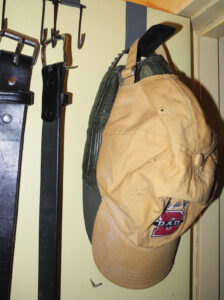Everyone can help, even a little
Mid-Ohio Valley residents know our region is a study in contrasts. Often in the same communities there is significant wealth and wonderful quality of life, right beside incredibly challenging financial circumstances and the kind of “quality of life” that makes young people wonder whether they should seek their fortunes elsewhere.
A recent Forbes report shows that contrast may be starker than we realize. Two of the top 15 richest cities in West Virginia are in Wood County. In fact, THE richest city in the state is here. (Bear in mind, Forbes defines “city” as a U.S. Census-designated place).
North Hills is the richest such place in the state. With 837 people living in 299 households, the “nice little suburb of Parkersburg,” as Forbes put it has a median household income of $143,125 — the highest in the Mountain State. Median home value in North Hills is $307,724, yet median property tax paid by each household is $1,680.
Forbes reports the largest share of the workforce in North Hills is in the Health Care and Social Assistance industries at 27.9%, followed by Educational Services at 11.3% and Other Services, Except Public Administration at 9.7%.
Meanwhile, at 13th on the list of top 15 richest cities in the state, sits Boaz — also in Wood County. With 547 households, the median household income is $92,708; median home value is $227,400 and median property taxes paid is $1,157.
Other cities on the list were in Jefferson, Monongalia, Putnam, Harrison, Randolph and even Logan counties.
Yes, Holden, Logan County, in the middle of the southern coal fields and founded as a “model mining town,” has a median household income of $79,970 — and 20.9% of the population living below the poverty line — but a MEAN household income of $259,196. It’s one of the more striking such differences between the two columns on the list.
(Median is the central point in the value set, but the mean is what most of us would think of as the average. Think, then, of what some of the figures near the top of the Holden value set must look like.)
Holden is about 27 miles from Kermit, in Mingo County, the city that became the poster child for having been ravaged by the beginnings of the opioid epidemic here. Median household income there is $31,500; less than half that of Holden’s.
A study in contrasts indeed. But that’s what we are, here in West Virginia.
We’ve got world-class resorts so luxurious and inviting that three of them — the Greenbrier, Stonewall Resort and Snowshoe Mountain — were named by Conde Nast Traveler as being 2025 Readers’ Choice destinations. We’ve also got crippling poverty that continues to do damage that seems almost impossible, sometimes, to overcome.
There are haves and have-nots here, but one of the wonderful things about West Virginia and Wood County is that so many of those who have the means do try to help.
Often, it is those in the middle who find themselves wondering if or how much they can make a difference while still keeping their own heads above water. Just getting by — survival — doesn’t always lend itself to progress or even being able to lift up others.
But there really are small ways we can try. If you’ve read the editorial on this page, you know we have a food drive Saturday in the News and Sentinel parking lot.
If you’re out and about running errands, pick up $5 worth of shelf stable food and drop it off with us. That might be a family’s dinner tomorrow.
Is there a nonprofit you’ve watched make a difference for the lives of people in your community or open the world to a student you know? Five dollars might be enough to push that nonprofit into being able to afford supplies for one more important program, or having enough to match funding from a grant.
Any organization will tell you, no gift is too small. No, we can’t bring everyone up to being at the level of some of those living in our richest cities. That’s not how the world works. But we can lift more people into feeling as though the contrasts aren’t QUITE so stark, and that maybe there is hope.



